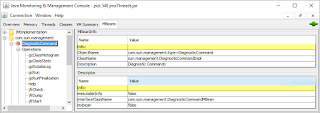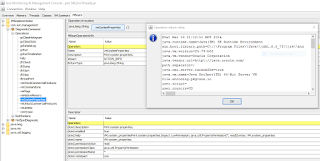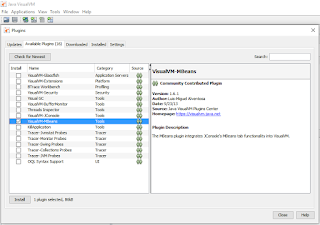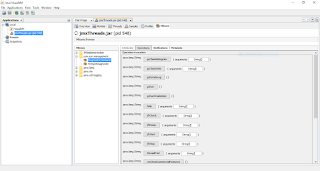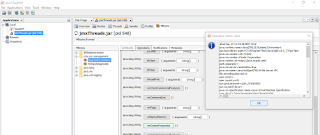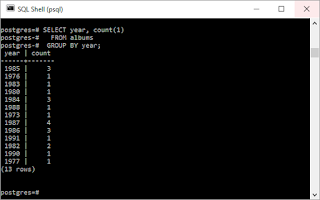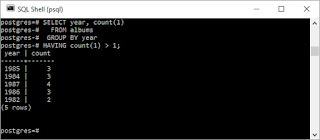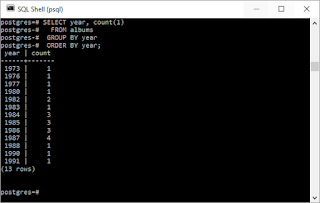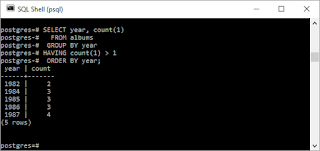I've used JConsole for many years as a suitable generic JMX client. This tool is generally available with the Oracle JDK and is easy to use. In terms of JMX interaction, the most significant advantage of JConsole over VisualVM is that JConsole comes with a built-in MBeans tab while a plugin must be applied for this same functionality in VisualVM. However, as I explained in the blog post From JConsole to VisualVM, this plug-in is easy to install. In this post, I look at an area where VisualVM with the MBeans plugin is superior to JConsole with its built-in MBeans support: DiagnosticCommandMBean. I am using the versions of JConsole and VisualVM that are provided with the Oracle JDK (Java 8).
The next three screen snapshots demonstrate accessing operations of DiagnosticCommandMBean via JConsole. The first image displays about details regarding the DiagnosticCommandMBean such as its ObjectName (com.sun.management:type=DiagnosticCommand). The second image demonstrates that JConsole allows one to see the VM's system properties by clicking on the operation's "vmSystemProperties" button. The third image demonstrates that some operations of the DiagnosticCommandMBean ("help" in this case) cannot be invoked from JConsole.
As the last image shown demonstrates, some MBean operations are disabled. The reason for this is that, as described on StackOverflow, "they are enabled only for operations which take in simple types." Andreas Veithen has elaborated on this: "JConsole [only] allows to invoke methods that only have parameters with simple types. That includes primitive types, wrapper classes for primitive types and strings. Methods that have parameters with other types cannot be invoked because JConsole doesn't know how to construct instances of these types."
Fortunately, the MBeans plugin for VisualVM does provide support for operations against DiagnosticCommandMBean that deal with more complex data types. This support was explicitly added via VISUALVM-574 ("Add support for DiagnosticCommandMBean in MBeans plugin"). The next screen snapshot depicts basic background information regarding this plugin and is available in VisualVM by clicking on Tools -> Plugins -> Available Plugins -> VisualVM-MBeans.
After downloading and installing the VisualVM-MBeans plugin, VisualVM makes all operations on DiagnosticCommandMBean available as demonstrated in the next three screen snapshots. The first image shows that none of the operations are "grayed out." The second and third images show that both the "system properties" and the "help operations" are supported.
In the example of invoking "help" above, I did not pass it any arguments, so it behaved exactly as jcmd would behave when "help" is invoked without any other arguments and returns a list of jcmd command options available for the given Java process. The next screen snapshot depicts how this works similarly to jcmd when I provide one of those command names to the "help" operation as an argument (getting help on VM.uptime in this case).
The Tool Enhancements in JDK 8 page explains that DiagnosticCommandMBean makes jcmd functions available programatically and remotely: "JDK 8 provides remote access to diagnostic commands which were previously accessible only locally via the jcmd tool. Remote access is provided using the Java Management Extensions (JMX), so diagnostic commands are exposed to a platform MBean registered to the platform MBean server. The MBean is the com.sun.management.DiagnosticCommandMBean interface." The VisualVM plugin for JConsole/MBeans support makes use of the graphical VisualVM tool behave similarly to using jcmd from the command-line.
This post has demonstrated that DiagnosticCommandMBean provides access to the same data that jcmd provides for remote and programmatic access and that VisualVM provides a useful graphical interface for taking advantage of DiagnosticCommandMBean via the VisualVM-MBeans plugin.
